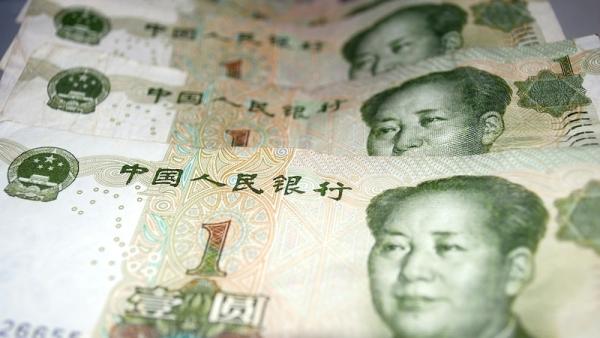Are the Chinese still getting bang for their investment buck?

James Laurenceson, Deputy Director, Australia-China Relations Institute, University of Technology Sydney |
This article appeared in Business Spectator on February 16 2015.
It’s the trillion dollar question about China’s economy.
The country is still investing but are the returns anywhere near what they used to be?
With the economy growing at its slowest pace in 24 years in 2014, and the IMF last month downgrading its prospects to 6.8 percent this year, it’s a question that keeps getting louder.
We’ve all the seen the photos of ghost cities without any residents, shopping malls without tenants or customers and the roads to nowhere.
Anecdotes can serve as useful warnings. But they can also distract.
Has the overall picture worsened so dramatically?
Many keen China watchers say “yes”.
The rot is usually traced to the early days of the Global Financial Crisis.
When growth started slowing sharply, the Chinese government told the state-owned banking system to open the credit taps.
The aim was to boost the quantity of investment: its quality was less of a priority.
In a sense, the policy response worked: output quickly stabilised.
But China bears believe that what the authorities delivered was the economic equivalent of a sugar hit. And when its effects began wearing off, they responded by bringing even more sugar.
A day of reckoning is fast approaching.
A quick look at the macroeconomic data suggests that they could have a point.
The World Bank says that back in 2007 investment in fixed capital accounted for 39.1 percent of China’s GDP. In the same year, the economy grew at a breakneck rate of 14.2 percent.
In 2013, the investment share of GDP had risen to 47.3 percent. Yet GDP growth had slowed to a more modest 7.7 percent.
So a crude number crunching exercise says that in 2007 it took $2.8 of investment to produce $1 additional dollar of output (39.1/14.2). By 2013, this had risen to $6.2 (47.3/7.7).
Investment seems to have lost its mojo.
But serious economists don’t take such calculations of the returns to investment too literally.
For a start, a rising number of investment dollars doesn’t mean a collapse is inevitable.
In 1989, the same calculation says it took $6.4 of investment to boost output by $1. In 1990, it took $6.7.
Yet China’s economy then proceeded to more than double in size by 1997.
Another problem with such estimates is that they jump around from year to year. That’s because anything that slows GDP growth – say, a slumping global economy - will give the impression that China’s investment efficiency has worsened. In fact, fundamentally nothing may have changed.
Macroeconomics gives us a better measure.
It’s called the marginal product of capital. It shows how output responds to a one dollar increase in the capital stock. Remember, it’s investment that increases the capital stock.
To estimate it, you only need to know two things.
The first is the share of GDP that is paid to owners of capital in forms such as profits. The second is the ratio of output to the capital stock.
Now multiply the two together and there’s your number.
The data we need can be found in The University of Pennsylvania’s Penn World Tables. The catch is that the latest edition only covers until 2011. Still, that’s three years after all the wasteful investment is supposed to have begun.
What this shows is that in 2007 a $1 dollar increase in China’s capital stock led to a $0.18 increase in output.
In 2011, it was $0.16.
A drop to be sure, but the 2011 figure isn’t low by historical standards. In fact, it was the average for China throughout the 1990s and 2000s.
And get this.
Repeat the exercise using US data and you’ll get $0.12.
If we close our eyes and take a deep breath, none of this is surprising.
With a population of 1.4 billion, capital in China remains scarce relative to labour. So the returns to investing in new capital are higher.
Now, what about 2012 until today?
Looking at the components of the marginal product of capital reveals a mixed bag.
The reason why the marginal product of capital is so much higher in China than in the US is because the capital share of GDP is bigger.
Again, that shouldn’t surprise anyone. The capital share of GDP is just the flipside of the share of GDP that’s paid to labour in forms such as wages. And wages in China have been held down by surplus workers from rural areas.
According to data from China’s National Bureau of Statistics, the real wages paid to these migrant workers leapt in 2010 and 2011. Since then though, they’ve started falling back more into line with the growth rate of overall output.
So by that assessment the capital share of GDP may have dropped slightly in recent years but it would remain well above that in the US.
The output to capital stock ratio has been on a downward trend since the mid-1990s. With extremely high rates of investment in 2012-2014, it’s likely that has continued.
So best guess is that the marginal product of capital in China today is sitting at around 0.14-0.15.
To be clear, none of the above analysis gives China’s economy a clean bill of health in each of its many sectors. But at the aggregate level, the returns to investment haven’t collapsed, albeit they have come off the boil.
And given that they remain around 20 percent higher than in the US, you’d be brave to bet against China for a little while yet.
Author
Professor James Laurenceson is Deputy Director of the Australia-China Relations Institute at the University of Technology Sydney.

